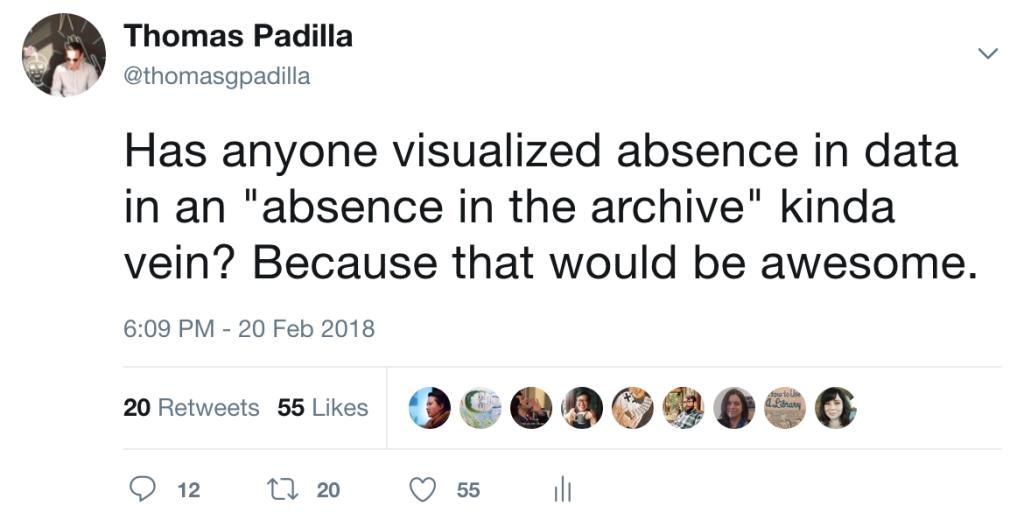In the Digital Humanities, it is common to weigh the research potential of collections as data by evaluating their representativeness. That is to say, we ask to what extent the data have the capacity to characterize a person, an event, a period, or an experience. Where the data exhibit significant informational paucity, indeterminate values, inordinate biasing, or limited scope it is common to cast them aside in pursuit of something held to be more representative. Alternatively, a move is made to systematically qualify data absence as a means of shoring up grounds for a redefined notion of representativeness to stand upon. Both responses generally fail to engage with data absence as a feature rather than a bug to be quashed. How might data driven scholarship be conducted in a manner that centers data absence?
I turned to Twitter with a question in this vein and did my best to document the generous response below.
Amalia S. Levi shared Lauren Klein’s The Image of Absence: Archival Silence, Data Visualization, and James Hemings. With this piece, Lauren (1) demonstrates how Digital Humanities techniques can be used to address archival silence (2) and frames challenges that an archive of slavery poses for the Digital Humanities.
Scott Weingart referred to absence as, “more a creative wellspring than a lacuna”, and shared a concise presentation on Fidelity at Scale. Scott raised the notion of a workshop or conference focused on productive explorations of archival absence at scale. I am all in for that. I’d guess that others would be to.
Read the full post here.


